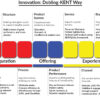
With the rapidly changing health care landscape, Indian and international hospitals have ever-growing financial demands on them. Higher input costs, decreasing reimbursements, and growing patient demands force hospital leaders to seek beyond procurement practice. While so much energy is typically devoted to negotiating lower acquisition prices of medicines, devices, or consumables, the hospital realities of losing more revenue by virtue of suboptimal utilization and system inefficiencies persist. These latent leaches drain the margin on a daily basis often unwittingly and can prove more harmful than acquisition costs by themselves.
One of the biggest causative forces of loss comes due to inefficiencies in operations. Hospitals that admit unnecessary patients, or admit patients who do not need to be admitted, end up taking up beds and resources that could have been dedicated on high acuity cases. Wait times by patients also form a huge latent cost. Patients who are made to wait long periods of time have compromised throughput, which translates to fewer patients that can be treated on any given day by the hospital. This does not merely reduce revenue, it also damages the institution’s reputation. Similarly, poorly scheduled operating theatres squander valuable resources by leaving the rooms idle. Every hour of idle time of an operating theatre translates to thousands of rupees of lost opportunity. High levels of readmission, frequently due to inefficient discharge planning, or follow-up that is poor, also cost more and concurrently, further deteriorate the outcomes of patients. Delays in billing and disbursement between recording charges also incur further financial losses since the charges that were missed due to consumables, or procedure may never be recouped (1,2).
Human resources, which prove to be one of the largest cost centres of hospitals, also cause inefficiency. High staff turnover forces organisations to pay high amounts on recruitment, induction, and training. Besides the direct expenditure, rampant churn erodes team cohesion and diminishes the quality of care that can be delivered to patients. Poor rostering makes the staff over-employed when volumes are minimal and high-demand centres poorly served, creating both financial inefficiency and clinical risk. Over-reliance on agency staff or locums, who also get recruited on high rates typically, is causing unnecessary expenses. Even when adequate number of staff exists, productivity gaps lie dormant where hospitals do not measure staff productivity against definitive parameters. Effective workforce management is not shrinking headcounts, it is right-sizing, optimising utilisation and ensuring that every single staffer brings value addition (3,4).
Another area where the losses accrue is the supply chain that controls the flow of medicines, implants, and consumables. Pilferage and theft of drugs or consumables persist at an astonishing level in many hospitals, bleeding resources that can be difficult to track. Poor negotiations with the vendors and decentralized, small procurements get the hospitals paying market plus prices. Inadequate procurement planning translates to stock-out, which forces the hospitals to make emergency purchases at exorbitant prices. On the flipside, overstocking equates to expiry loss, especially at the level of the pharmacy where medicines expire on the shelves before being used. Lack of a modern supply chain management system supported by data analytics and real-time movement tracking will have these losses continuing to eat into hospital margin surreptitiously (5,6).
Technology, that great engine of efficiency, can be a drain if poorly utilized. Hospitals pay software license fees or hospital information system modules that remain un-implemented. IT systems that do not integrate billing, pharmacy, laboratory, and radiology functions lead to reduplication of effort and increase the risk of errors. Expensive maintenance agreements on outdated equipment drain budgets with nothing of value returned. Better still, cybersecurity breaches risk reputational damage and fines for hospitals. Instead of enablers, unused technologies and brittle digital infrastructure can surreptitiously hurt financial health (7,8).

Revenue leakages pose an identical challenge. Rejections of insurance claims frequently result not due to unnecessary services, but due to inappropriate documentation or errors in coding. Delays paid by insurers or third-party administrators prolong working capital cycles and complicate day-to-day hospital operations sustainability. Underbilling is typical, especially if consumables, investigations, or minimal procedures have not been documented appropriately in patient bills. Additionally, hospitals that do not practice cost-based pricing frequently end up billing lower than the breakeven level for some of the services, which discourages profitability of the entire service lines (9,10).
Facility management adds another dimension to the above problem. Large buildings like hospitals absorb a lot of resources, and inefficient utility and infrastructure management cause built-in financial losses on a continuous basis. Usage of air conditioning, oxygen supply, or lighting—such as keeping theatre lights on a continuous 24/7 basis—drives up energy costs unnecessarily. Space inefficiency translates into empty wards or units on the one hand and continuing overhead costs like manpower, electricity, and maintenance on the other. Breakdown of medical devices, unless controlled by preventive maintenance, eats unnecessary emergency repair cost and incurable downtimes. Additionally, non-compliance of hospitals by the laws laid down by legislature regarding fire safety, biomedical waste disposal, or accreditation requirements normally calls down bribes, fines and penalties, which drain resources further (11).
Clinical practice itself can also cause financial loss if poorly managed. Defensive medicine, where doctors refer patients for excessive investigations to safeguard against the risk of litigation, increases expenditure with minimal additional value. Inappropriate antibiotic use not just incurs increased bills for the pharmacy department but also adds to antimicrobial resistance, which prolongs the hospital stay of the patient and makes care more complicated. Surgical complication rates and rates of subsequent operation, also, incur increased hospital expenditure while eroding patient confidence. Probably the most expensive of all hospital errors are hospital-acquired infections, which delay the discharge of the patient and incur further treatment, which is preventable with stringent infection control procedures (12,13).
These illustrations collectively highlight the fact that not only do hospitals lose due to what they pay for, they also lose due to what they do not control, track, and improve upon. The road ahead is to build a culture of effectiveness, of responsibility, and of data-driven management. Supply chain digitalization, workforce planning methodology, sound clinical governance, and rigorous facility audits are no longer options—these constitute survival strategies of the next-generation healthcare economy. Ultimately, the hospitals will have to get beyond cost reduction to value creation. Better patient outcomes at sustainable cost is the dual challenge of today’s health care. Every inactive operating theatre, every lapsed medicine, every rejected claim is like leaving money on the table. The future is that of organisations that can align operational excellence and clinical quality and balance financial health and patient centricity. That alone will give hospitals the capability of winning where the environment of rising expectation and shrinking margin prevails.
Dr. Prahlada N.B
MBBS (JJMMC), MS (PGIMER, Chandigarh).
MBA in Healthcare & Hospital Management (BITS, Pilani),
Postgraduate Certificate in Technology Leadership and Innovation (MIT, USA)
Executive Programme in Strategic Management (IIM, Lucknow)
Senior Management Programme in Healthcare Management (IIM, Kozhikode)
Advanced Certificate in AI for Digital Health and Imaging Program (IISc, Bengaluru).
Senior Professor and former Head,
Department of ENT-Head & Neck Surgery, Skull Base Surgery, Cochlear Implant Surgery.
Basaveshwara Medical College & Hospital, Chitradurga, Karnataka, India.
My Vision: I don’t want to be a genius. I want to be a person with a bundle of experience.
My Mission: Help others achieve their life’s objectives in my presence or absence!
My Values: Creating value for others.
References
- Porter ME, Lee TH. The strategy that will fix health care. Harv Bus Rev. 2013;91(10):50-70.
- Kaplan RS, Porter ME. How to solve the cost crisis in health care. Harv Bus Rev. 2011;89(9):46-52.
- Buchan J, Shaffer FA, Catton H. Policy brief: Nurse retention. Int Council Nurs. 2018.
- Aiken LH, et al. Nurse staffing and education and hospital mortality in nine European countries. Lancet. 2014;383(9931):1824-30.
- McKinsey & Company. Strengthening health care’s supply chain: A five-step plan. McKinsey Insights. 2020.
- Kwon IWG, Kim SH. The supply chain in hospitals: Current status and future prospects. Int J Health Plann Manage. 2020;35(5):1080-9.
- Adler-Milstein J, et al. Electronic health record adoption in US hospitals: Progress continues, but challenges persist. Health Aff. 2014;33(9):1672-9.
- Kruse CS, et al. Cybersecurity in healthcare: A systematic review of modern threats and trends. Technol Health Care. 2017;25(1):1-10.
- Tan SS, et al. Economic evaluation of hospital care: Methodological considerations and practical implications. Eur J Health Econ. 2015;16(2):165-73.
- Zlabek JA, Wickus JW, Mathiason MA. Early cost and safety benefits of an inpatient electronic health record. J Am Med Inform Assoc. 2011;18(2):169-72.
- World Health Organization. Safe management of wastes from health-care activities. 2nd ed. Geneva: WHO; 2014.
- Cassini A, et al. Attributable deaths and disability-adjusted life-years caused by infections with antibiotic-resistant bacteria in the EU and EEA, 2015. Lancet Infect Dis. 2019;19(1):56-66.
- Allegranzi B, Pittet D. Role of hand hygiene in healthcare-associated infection prevention. J Hosp Infect. 2009;73(4):305-15.

















Dear Dr. Prahlada N.B. Sir,
Thanks for this relevant post to all doctors, especially those who own their own hospitals. Your insightful article, "How Hospitals Lose Money Through Poor Utilization," sheds light on the critical aspects of hospital management that can make or break the financial sustainability of healthcare institutions 🌟.
Your breakdown of the various areas where hospitals lose money, from operational inefficiencies to poor supply chain management and technology utilization, is both comprehensive and thought-provoking 📊. The examples you provided, such as idle operating theaters and ineffective workforce management, highlight the need for hospitals to adopt a more strategic approach to resource allocation and utilization.
I particularly appreciated your emphasis on the importance of data-driven management, clinical governance, and facility audits in ensuring the financial health of hospitals 📈. Your suggestion that hospitals should focus on value creation, rather than just cost reduction, resonates deeply in today's healthcare landscape.
Thank you sir, for sharing your expertise and experience with us. Your blog post is a valuable resource for healthcare professionals and hospital administrators seeking to optimize their operations and improve patient care 🙏.
Wishing you continued success in your endeavors, and looking forward to more insightful articles from your pen ✍️.
With deepest appreciation,
Reply🤝🙏.